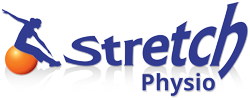Q. – Why is flexibility essential to improve running technique?
In short, some flexibility is really important, but not just for good running technique. There is a wealth of literature to show that flexibility should form a key pillar of any activity, sport or exercise. It is crucial for injury prevention and improving the strength of joints, tendons and ligaments – all the pieces required for good running technique! Never mind the overall benefits of improving core strength, posture and joint health. Never fear though, improving flexibility doesn’t mean running off to the circus to become a contortionist, nor do you have to be a yoga guru.
Warm up prior to working out – this should be dynamic, the days of holding a stretch for what feels like an eternity while your muscles squeal in agony are long gone. Dynamic, whole body stretches, before doing any exercise are excellent. Think body weight squats, burpees, the trusty star jump. This warm up should actually bring you out in a light sweat even before you head off on your run.
After your run/training session – now that your muscles are warm, some gentle static stretches of those muscles to help lengthen them can help – about 6 breaths on each side and avoid ‘bouncing’ into stretches while trying to touch those elusive toes.
Massage! The fun part of flexibility training – a good sports massage can help to increase blood flow and post exercise relaxation. If a regular massage is ‘stretching’ a budget too far, a trusty foam roller is also a popular way to ease those muscle post exercise.
In this day and age, life and work are all too often full of hectic schedules and stress. Stress can cause us all to tighten up into little balls of knots which are no help to our muscles. Taking time to unwind can also be considered helpful to improving your flexibility – in this case, mediation to focus on breathing techniques, light yoga and even short walks to clear the mind can be excellent techniques for improving flexibility.
Finally, stay hydrated, our muscles, like the rest of us are made up mostly of water. Keeping them well hydrated allows them to work at their best. Focusing on hydration won’t instantly bring your finger tips to your toes, but it will give your muscles their best chance of getting your there.
Q. Which part of my foot should I land on when running? Or does it depend on the pace/distance?
People often discuss ‘good running technique’ but there is little definition as to what this truly is. Mainly, because everybody is different! Flexibility, stretching, tomayto, tomaaaaato…are preached as good practice for runners and their technique. To understand why this is the case, we need to talk a little about the phases of running.
Getting straight to it – the loading phase. Ideally the runner should place the mid or forefoot on the ground. This is so that the heel doesn’t take too much of an impact (which may cause injury) and also slow the runner down! Naturally, as we speed up and slow down the foot placement changes, but around midfoot is a good place to aim. The feet need adequate calf and hamstring length to achieve this position. Read: Stretch those muscles to prime them for this phase.
Once on the ground the calf and Achilles’ are stretched and will start to respond by quickly contracting, pushing the foot through the big toe and entering – propulsion phase! Here is where risk of injury is high. So, warm, flexible and responsive Achilles’ can reduce the risk of tendinopathies, injuries and plantar fasciitis. Meanwhile, this footwork is being powered by the hip. The extension of the hip itself is what provides the powerful propulsion and speed. Flexible hip flexors will allow for good extension and reduce wasted energy in excessive trunk movement.
The recovery phase begins once the fully extended hip starts moving forward again. Naturally, the lower leg lifts, the knee leads, and the foot placed underneath the runner (enter quadriceps muscle), ready to start the process again. During all this, the upper body should be upright with a slight forward lean.
Poor flexibility may mean tight and shortened muscles which can result in more injuries, reduced running stride length and a poor recovery phase. This has the bigger picture impact of reducing the ability to train regularly. A systematic review of 27 studies in the British Journal of Sports Medicine found that no single variable can improve running technique and that real time feedback was most helpful to runners. But, if you can’t afford a mobile gait analysis laboratory or a non-stop chatting physiotherapist to come with you on every run, there are some good apps that may help. Hudl and Metrotimer are good for recording your running style and also assisting with cadence training. However, another study following new runners over 10 weeks found that by simply increasing their exposure to running, they naturally improved their technique. So good principles and regular running is definitely the way
…forward?
Related links:
https://www.ncbi.nlm.nih.gov/pubmed/26158882
https://www.ncbi.nlm.nih.gov/pubmed/25701012

